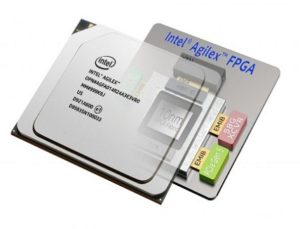
Intel announced in August 2019 that it had begun shipments of the first Intel Agilex field programmable gate arrays. Early access program customers were using Agilex FPGAs to develop advanced solutions for networking, 5G and accelerated data analytics. Participants in the early access program include Colorado Engineering Inc., Mantaro Networks, Microsoft and Silicom. These customers are using Agilex FPGAs to develop advanced solutions for networking, 5G and accelerated data analytics.
In the data-centric, 5G-fueled era, networking throughput must increase, and latency must decrease. Intel Agilex FPGAs provide the flexibility and agility required to meet these challenges by delivering significant gains in performance and inherent low latency. Reconfigurable and with reduced power consumption, Intel Agilex FPGAs have computation and high-speed interfacing capabilities that enable the creation of smarter, higher bandwidth networks and help deliver real-time actionable insights via accelerated artificial intelligence (AI) and other analytics performed at the edge, in the cloud and throughout the network.
Intel Agilex FPGAs provide innovative new capabilities to help accelerate the solutions of tomorrow. Innovations include:
- Compute Express Link: Industry’s first FPGA to support upcoming Compute Express Link (CXL), a cache and memory coherent interconnect to future Intel® Xeon® Scalable processors.
- 2nd-generation HyperFlex architecture: Up to 40% higher performance or up to 40% lower total power2 compared with Intel® Stratix® 10 FPGAs1.
- DSP innovation: Only FPGA supporting hardened BFLOAT16, with up to 40 teraflops of digital signal processor (DSP) performance (FP16)3.
- Peripheral component interconnect express (PCIe) Gen 5: The ability to scale for higher bandwidth compared with PCIe Gen 4.
- Transceiver data rates: Support up to 112 Gbps data rates for high-speed networking requirements for 400GE and beyond.
- Advanced memory: Support for current DDR4, and upcoming DDR5, HBM, and Intel® Optane™ DC persistent memory.
















